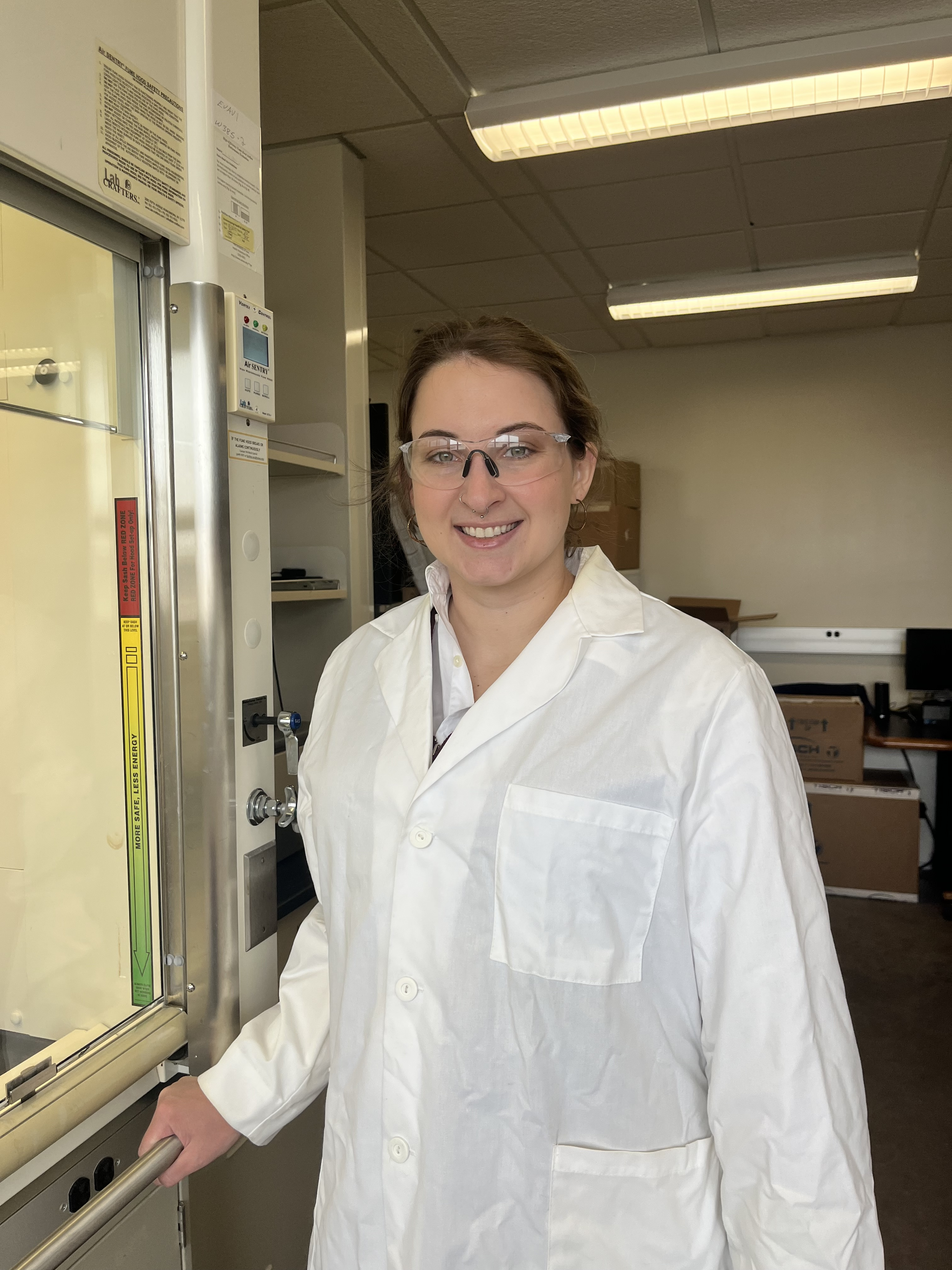College of Liberal Arts & Sciences
UIowa Students “Shut the Sash” to Help Reach Sustainability Goals

By Will Tjeltveit, Graduate & Professional Student Government
If you have been in a University of Iowa laboratory in the past few months you may have seen a new sticker on the doors to fume hoods with a simple arrow and the words, “More Safe, Less Energy.”
These stickers are a part of the Graduate and Professional Student Government (GPSG) Sustainability Committee’s “Shut the Sash” campaign encouraging students and researchers to keep fume hoods—the ventilated enclosures that allow researchers to handle hazardous materials without inhaling their vapors—closed. Working with the University of Iowa Office of Sustainability, stickers with these reminders were distributed in the fall of 2024 to help make the university a safer and more sustainable environment.
Fume hoods are a crucial part of laboratory work but require large amounts of energy to run with supply and exhaust fans constantly running. On average the energy used by a single fume hood is equivalent to that of approximately three US homes. By simply lowering the “sash” (the movable window allowing access to the fume hood), however, the air flow is reduced and the energy needed decreases.
With this decrease in energy comes reduced costs and greenhouse gas emissions as well as an increase in safety. A Harvard University study found that reducing how often and how much the sash is open can save approximately $200,000 - $250,000 per year and cut greenhouse emissions by as much as 200-250 metric tons of carbon dioxide equivalent.1 Shutting the sash also lowers the likelihood that fumes escape and are inhaled by researchers or students.
With several hundred fume hoods on the University of Iowa’s campus, the Shut the Sash campaign looks to drastically reduce the energy we consume on campus and bring us another step closer to a safer, more sustainable future.
Shutting the Sash at UIowa
At present, more than 120 Shut the Sash stickers have been installed in both teaching and research laboratories in the chemistry and engineering buildings with work still underway on the biology buildings, Iowa Advanced Technology Laboratory and medical research buildings.
The stickers are being paired with an educational campaign to inform students and researchers at the University about the benefits of keeping the sash lowered or closed. The distribution of fliers and promotional materials, and conversations with faculty and research leaders have been ongoing to help fume hood users across the campus understand why this small simple action matters.
The GPSG Sustainability Committee sees this project as an important step towards reaching the University’s Sustainability Goals:
Shutting the Sash reduces greenhouse gas emissions associated with fume hoods (Goal 1: Reduce greenhouse gas emissions by 50% compared to 2010 baseline).
The project works to imbed sustainable thinking and practices into one of the most energy intensive spaces on a college campus: the laboratory (Goal 2: Institutionalize and embed sustainability into campus culture).
The campaign builds on the implementation of similar programs at college campuses and laboratories around the world and is become a standard practice in many settings (Goal 3: Prepare students to live and work in the 21st century through sustainability education; Goal 4: Facilitate knowledge exchange among the campus community and the state of Iowa, nation, and world).
This is just one of the GPSG Sustainability Committee’s projects for the 2024-25 school year with other exciting upcoming projects including an Iowa River clean-up day and symposium on Iowa water quality later this spring! Follow the GPSG on Instagram at @uiowagpsg
If you would like to get involved with the GPSG Sustainability Committee or if you work in a laboratory that currently does not have a Shut the Sash sticker on your fume hood and would like one, please reach out to Josie Welker, GPSG Sustainability Director at josie-welker@uiowa.edu
References:
1. Gilly, Q. Validating Cost and Energy Savings from Harvard's Shut the Sash Program.